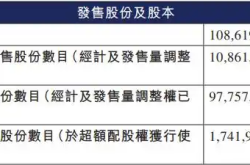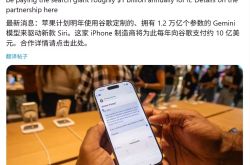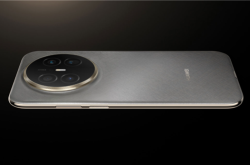Postscript of the 2025 Shenzhen International Optical Fair: The AI Glasses 'Deluge'
![]() 06/30 2025
06/30 2025
![]() 773
773
Text/VRGyro Wan Li
The 2025 Shenzhen International Optical Fair has successfully concluded today.
Held at the Shenzhen Convention and Exhibition Center, the fair centered around 'Traditional Eyewear + Smart Wearables', attracting over 200 exhibitors from more than 20 countries and over 30,000 professional visitors.
I visited the fair on the first day, and the level of intelligence displayed far surpassed my expectations.
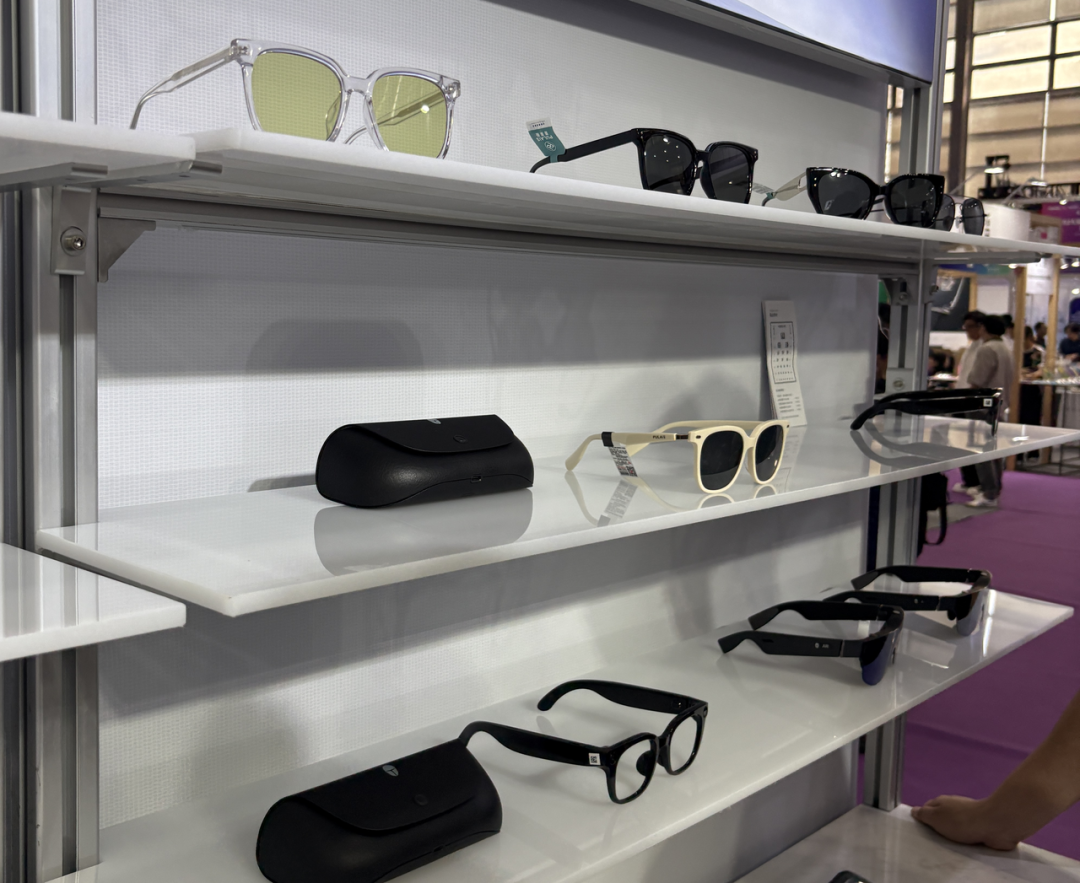
Low-Price Zone: Audio Glasses at 100 Yuan, Photo Glasses Within 300 Yuan are the 'Norm'
Since the second half of last year, domestic eyewear exhibitions themed on 'Tradition + Smart' have increased gradually. I have attended several exhibitions before, and at that time, I felt that 'AI Glasses' were mostly just gimmicks, with few related hardware products and a low proportion of exhibitors.
Returning to this event, the first thing I noticed was a significant increase in the proportion of exhibitors related to smart glasses compared to the past. AI glasses were ubiquitous at this exhibition. Words like 'Smart Glasses', 'Deepseek', and 'Supports Taking Photos' were frequently seen on the posters of major manufacturers. You could hear inquiries about AI glasses almost everywhere you went.
According to my incomplete statistics, booths involving smart glasses have reached over 20%, although it cannot be ruled out that this is the result of specific invitations from the organizer.
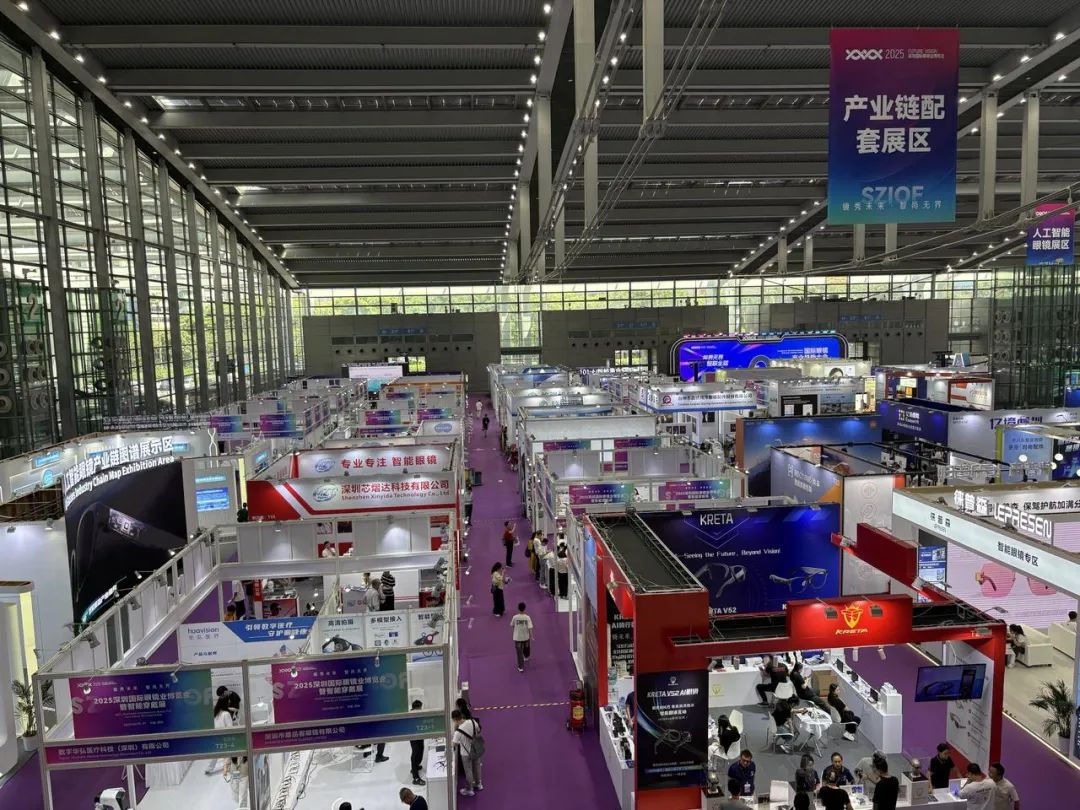
After visiting the exhibition, I had a feeling similar to frequently looking at the same word until I suddenly don't recognize it anymore: the exhibition site was flooded with audio glasses and photo glasses. Given that each model looked almost the same, with similar weights, mostly black in color, and a left flash + right camera design on the front frame, the logo on the temple side became the only distinguishing feature of the product.
Moreover, the functional products of each manufacturer were largely similar, supporting music listening, AI, translation, etc., leading to exhaustion after experiencing them all.

A model of smart glasses
1. One Hot Pot Meal = One Pair of Photo Glasses
I briefly consulted with some smart glasses merchants and found that most of them hailed from Shenzhen or Dongguan, with some from Zhejiang. The proportion of 'Huaqiangbei-style' merchants was not low, and the ultra-low price of their products was naturally a major attraction.
For example, Yihuaren Digital told me, 'Our newly launched audio glasses are very cost-effective and can be sold in batches for thirty to forty yuan.' For photo glasses, they exhibited a 2-megapixel product on their booth, stating that a large batch would be available in July, priced around 300 yuan.
When I inquired about prices during my visit, exhibitors would instinctively ask me how many I needed and indicated that if the quantity was large, the price could be further negotiated. For example, Magicbao had a 5-megapixel model on-site, and staff said, 'It's 230 yuan for one or two units. If in bulk, starting from 300 units, it's 220 yuan.'
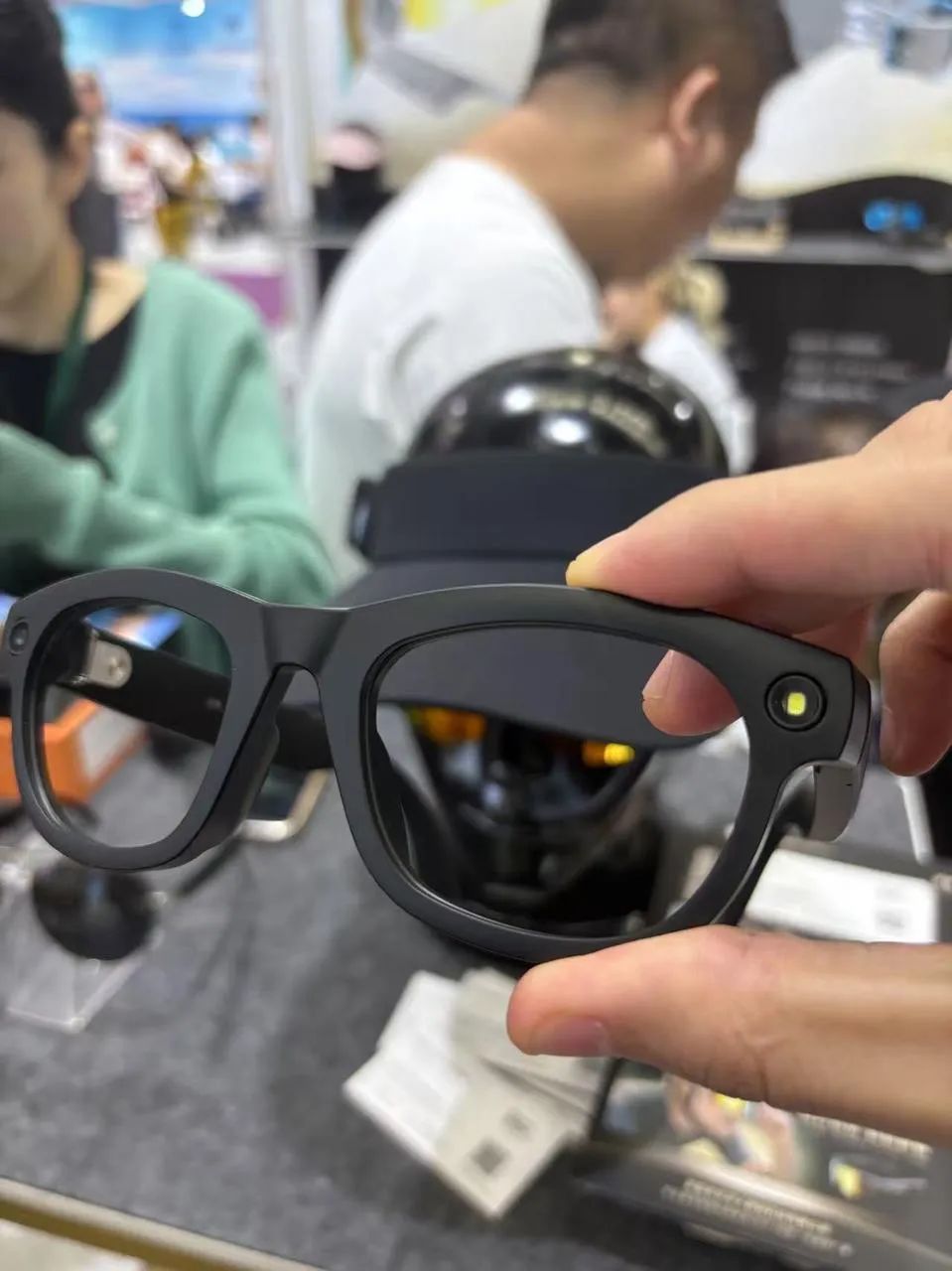
2. Rapid Development Speed, Uneven Experience Across Manufacturers
These smart glasses manufacturers have a keen sense of smell. One manufacturer pointed out that their company previously focused on smart wearable devices and started making photo glasses in March this year, producing samples in just a few months. The opportunity for companies to enter the AI glasses market is likely related to the industry's growing popularity.
In terms of research and development (here specifically referring to low-cost photo glasses), the progress of each manufacturer varies. For example, some manufacturers said that the products currently on display are still just a preliminary version and can only be viewed externally. 'The photo function is not ready yet, still being adjusted.' Some manufacturers would deliberately show me photo/video samples, but the effect could only be described as average, given the price.
Regarding video recording, the completion level of each product also differed. For example, some manufacturers stated that their products support 1 hour of video recording but need to stop every three minutes. In addition, most of these products only support Bluetooth, so the experience in video transmission was not user-friendly, with a one-minute video material taking one minute to transfer to a mobile phone.
Dongfang AI Glasses has a 5-megapixel model with a 265mAh battery, claiming to support continuous video recording for 90 minutes. The glasses use a chip solution from Jieli and Allwinner.
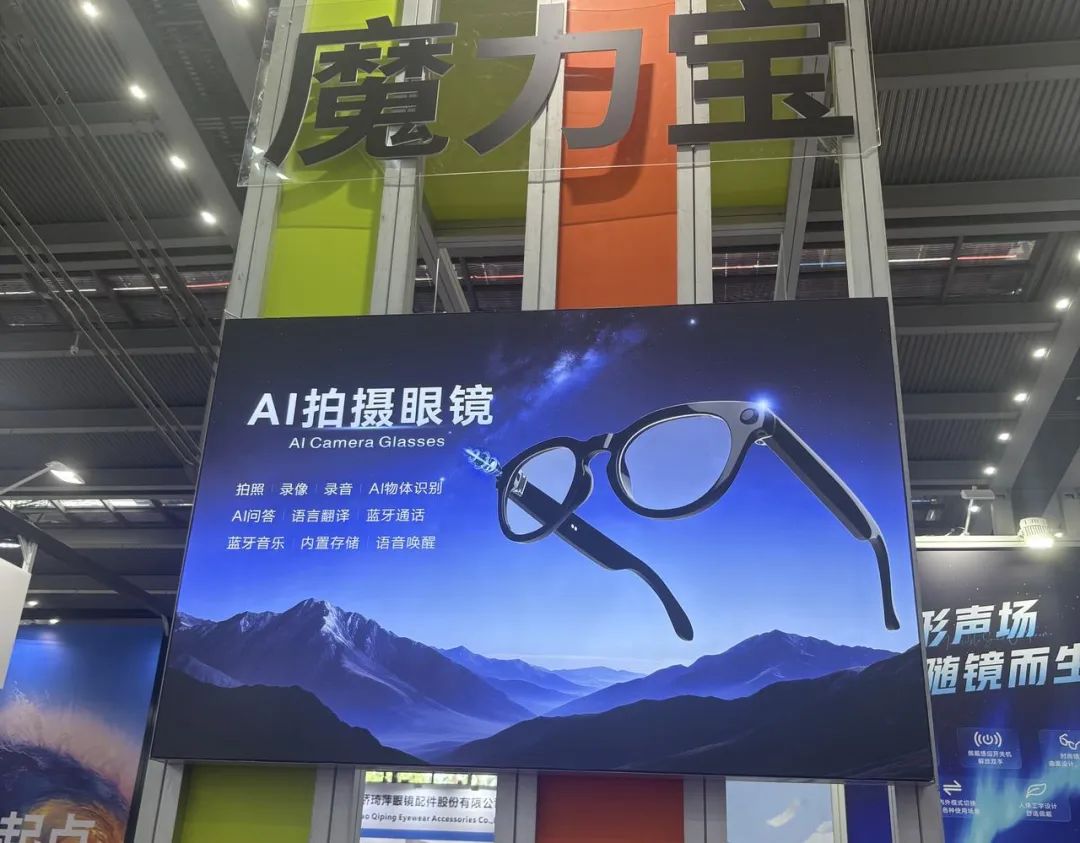
AI Photo Glasses Everywhere
3. Differentiation Beyond Low Prices
The specifications of low-cost camera glasses displayed on-site were mostly 2 million/5 million pixels, but some manufacturers have already started targeting products with 8 million and 12 million pixels.
For example, Jinjiatong pointed out that their 8-megapixel glasses already have prototypes and may be available as early as July, while the company is also developing a 12-megapixel product. 'AI glasses are mostly used by young people, mainly for shooting vlogs. This 2-megapixel model actually cannot meet their needs.'
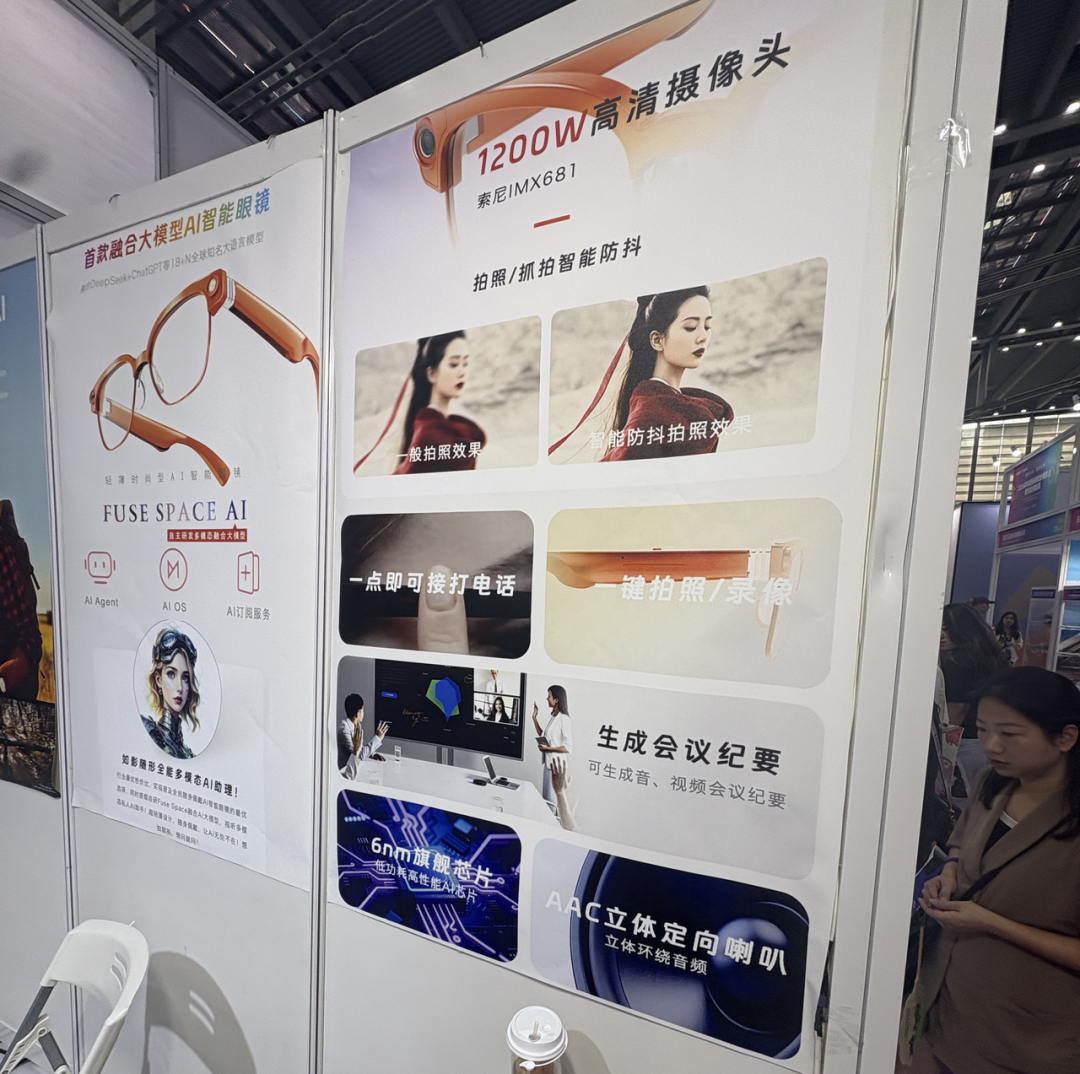
For audio glasses, perhaps I had been exposed to too many low-cost products earlier. When I saw a manufacturer selling audio glasses priced at 198 yuan, I subconsciously felt that it was too expensive.
Staff said that although their price was relatively higher, you could clearly feel the difference in the overall texture of the product, and the design was also much better. (Note: Many ultra-low-cost products even have non-foldable temples.)
Magicbao exhibited an audio glasses model priced at 119 yuan on-site. The company said that the reason for the 'higher price' mainly lay in the chip and board material, and more premium products would come equipped with features like automatic sensing and power-on.
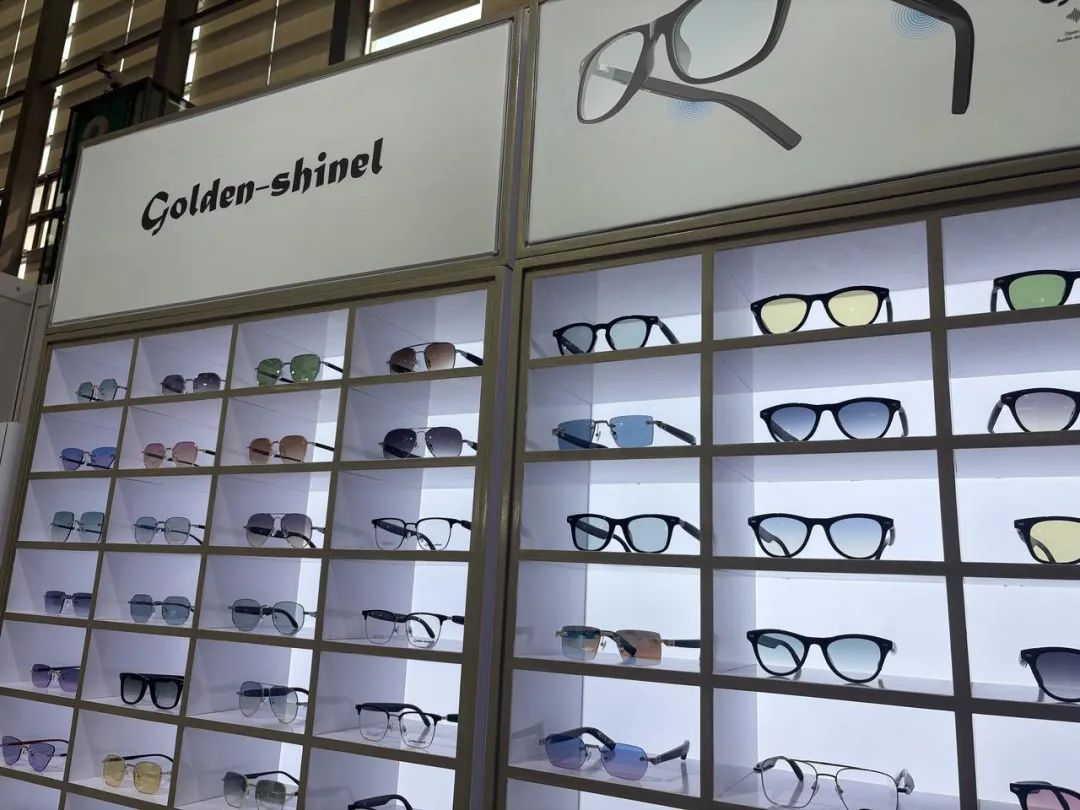
Advanced Audio Glasses Priced at 198 Yuan
High-Price Zone: AR Glasses Remain a Rare Species, Xiaomi Booth Disappointment
This section mainly refers to branded eyewear manufacturers such as ThunderBird Innovation, JieHuan, Xiaomi, Skyworth XR, etc. Due to their high popularity, there was a large flow of people at their booths, and experiencing their products often required 'small queues'.
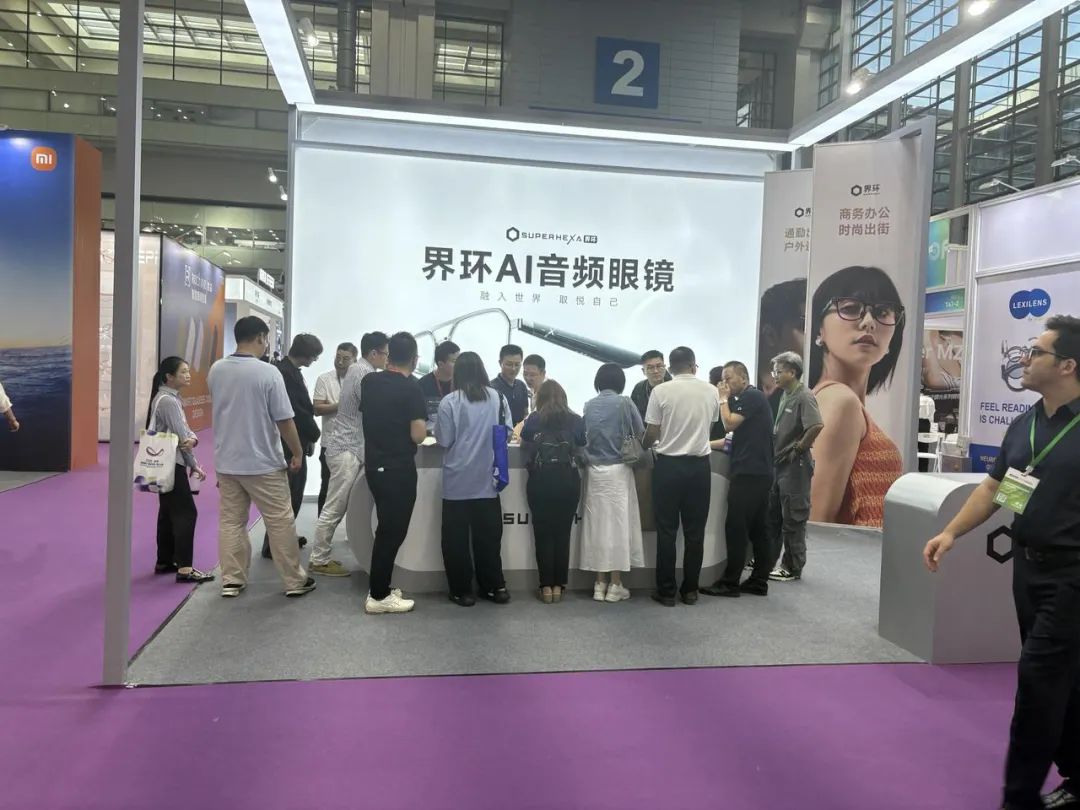
Of course, there were also some new manufacturers present, such as Xingshan Chuansheng, which exhibited an AI smart sunglasses model XS-FX01 on-site. The parameters indicate that the product supports real-time translation in over 80 languages, with simultaneous interpretation latency as low as 0.3 seconds, and integrates large models like Deepseek, priced at 1980 yuan.
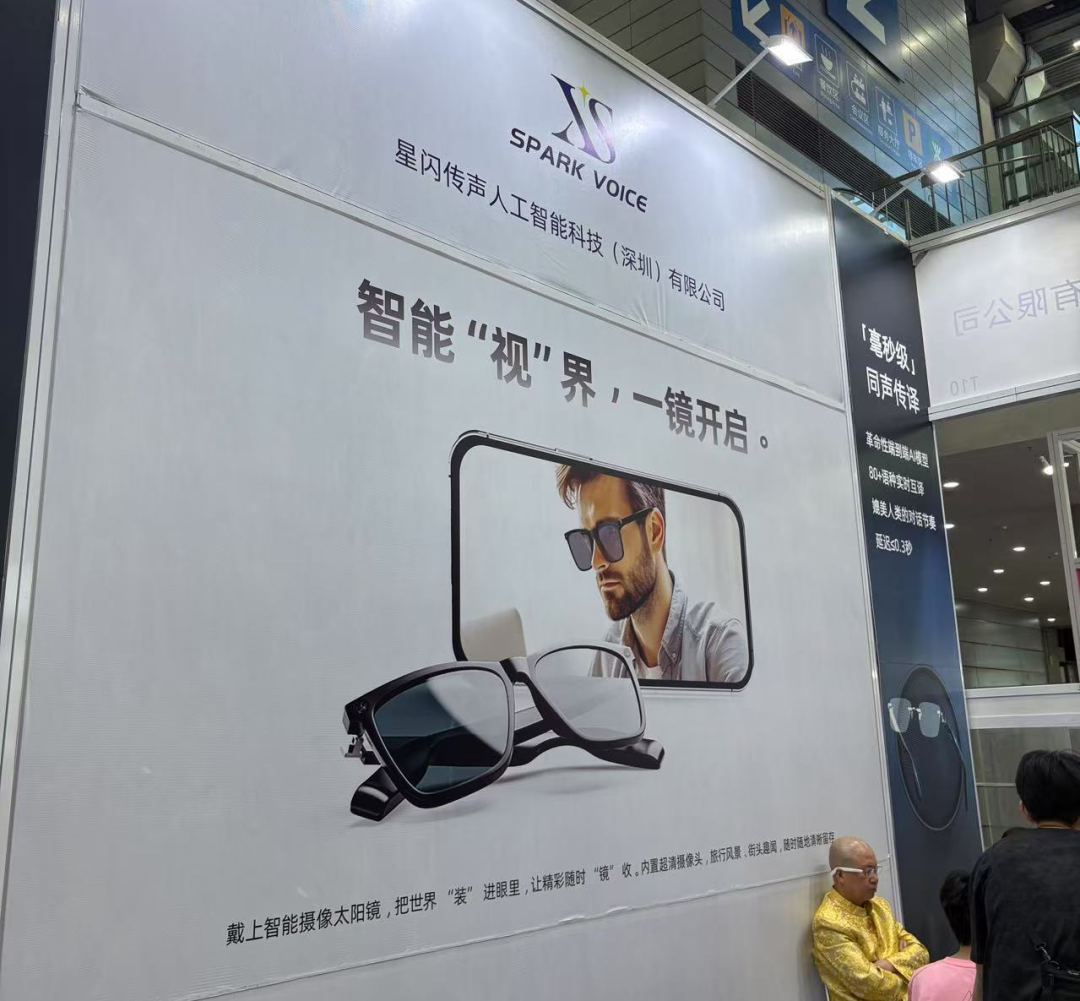
In addition, I also noticed the following phenomena during my visit:
1. Xiaomi Glasses Were a 'False Surprise'
Yes, Xiaomi also participated in the exhibition.
When I visited on June 25th, Xiaomi's new AI glasses were scheduled to be launched on the evening of the 26th. I thought there would be a display of the new product at the booth, but unfortunately, I couldn't see it. Only Xiaomi's audio glasses were on display. I tried to inquire about the price of the new product, but staff smiled obsequiously and said nothing could be disclosed. (Of course, by now, the price is already known, starting at 1999 yuan.)
It is worth mentioning that Xiaomi's product experience method at the booth was very user-friendly. For example, in other exhibition areas, experiencing products often required staff to connect to a mobile phone for subsequent operations, and many times, visitors were told that the phone was out of battery or had poor signal and could not be used. In contrast, Xiaomi glasses could be tried on and listened to right away, and the frame also supported functions like charging, adjusting volume, skipping tracks, and serving as a makeup mirror.
Regarding Xiaomi's new product, I also consulted with staff from Yijing Virtual. He said that the impact of Xiaomi's AI glasses on the industry was certain, as Xiaomi is likely to continue playing the role of a 'price killer,' not ruling out the possibility that its selling price could be lower than the cost price of some manufacturers. The company will continue to pay close attention and adjust its strategy accordingly.
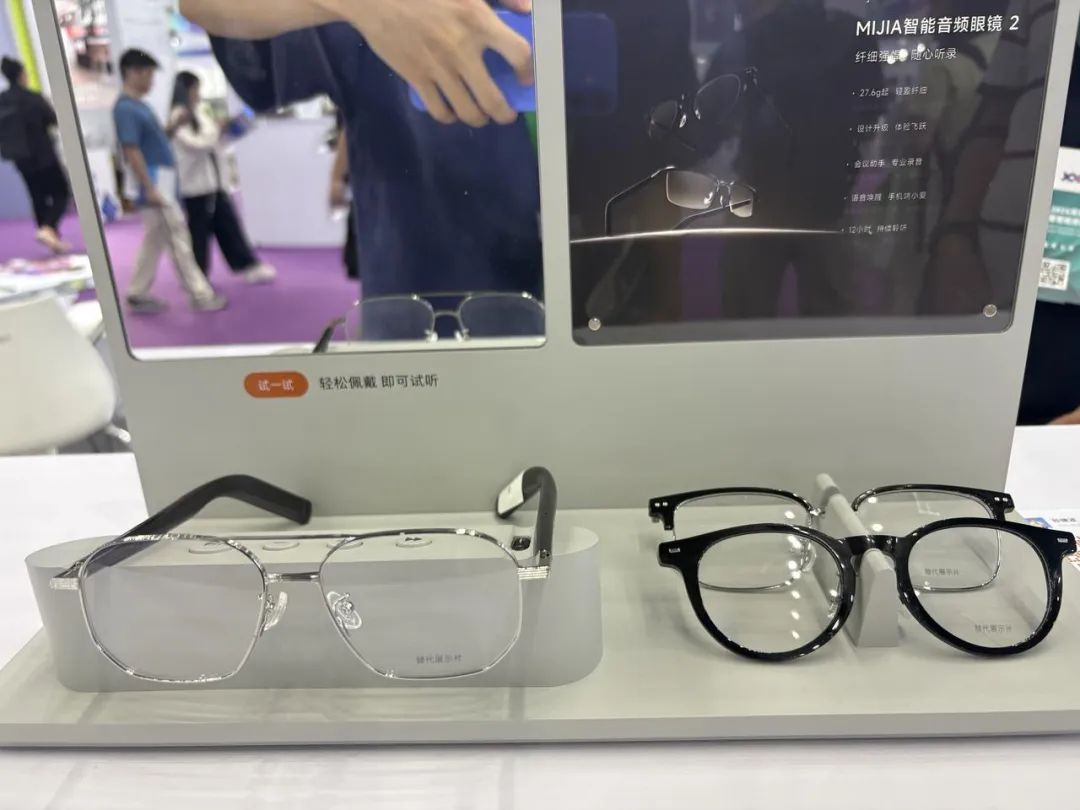
2. Few AR Glasses, GlowTech Exhibits 'True' AI+AR Glasses
Overall, the vast majority of products on-site were audio/photo glasses, and glasses equipped with optical screens were rare. There were only two manufacturers with dedicated booths: ThunderBird Innovation and GlowTech, which respectively exhibited new products like the ThunderBird X3 Pro and the Xuanjing M5. Some exhibition areas also displayed products like Haliiday and VR glasses, but they were generally few.
GlowTech told me that on the first day of the exhibition, the company brought several products for display, which were quickly sold out. Since the exhibition attracted many foreign visitors, the translation function of the glasses could well meet their needs for visiting the exhibition.
It is worth mentioning that GlowTech also showcased an unofficially released new product on-site, which was the hardware that impressed me the most at this exhibition. As shown in the figure below, it adopts a modular design of 'AI glasses + AR lens.' In ordinary scenarios, AI glasses can be used, and if there are special scenario needs, such as translation or meeting minutes, the AR lens can be attached to the AI glasses. It is reported that the new product will use full-color single-light engine binocular waveguide + Micro-LED, with pre-sales planned for August this year and a release in September.
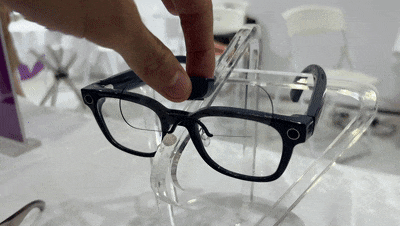
GlowTech's Mysterious New Product
3. Cross-Industry Collaborations, Traditional Manufacturers May Further Expand
In recent years, cross-industry collaborations in smart glasses have been a clear trend, and some signals could be felt during this exhibition.
For example, at the LOHO booth, there were glasses AI photo mirrors in collaboration with Shanji displayed. Staff on-site said that Shanji's glasses went on sale on JD.com last month and are already available in several major offline stores. As an aside, the day after writing this, LOHO also jointly released an AR smart sports glasses with Guangli.
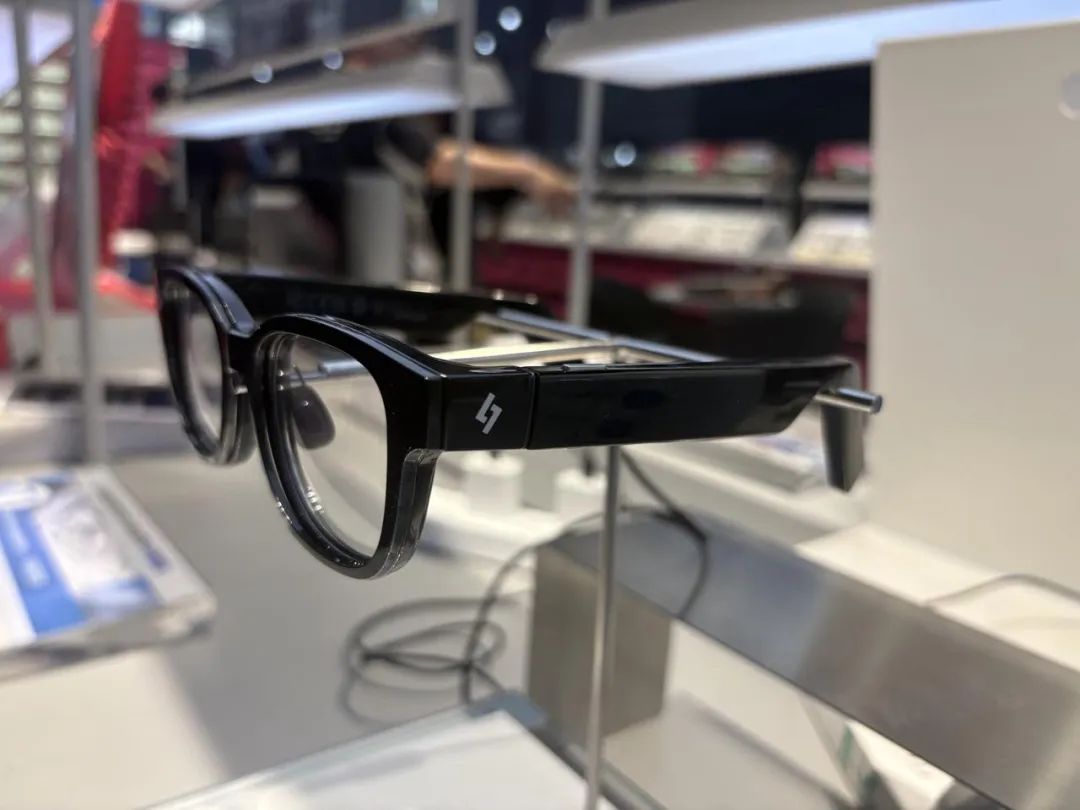
In addition, I could see Huawei glasses at both the Price and Baiqi booths. Staff from Baiqi said that the company recently reached a cooperation with Huawei, and co-branded models will be launched in subsequent stores. The temple technology comes from Huawei (likely the Huawei Smart Glasses 2), while the frame part is designed by the company itself. Price also adopted a similar cooperation strategy. Regarding pricing, Baiqi said that the pricing has not yet been determined, while Price indicated a suggested retail price of 1500 yuan.
Not only that, the Price booth also exhibited several new glasses models from Thunderobot Technology. When asked if there was any cooperation between the two, staff said that their bosses are good friends.
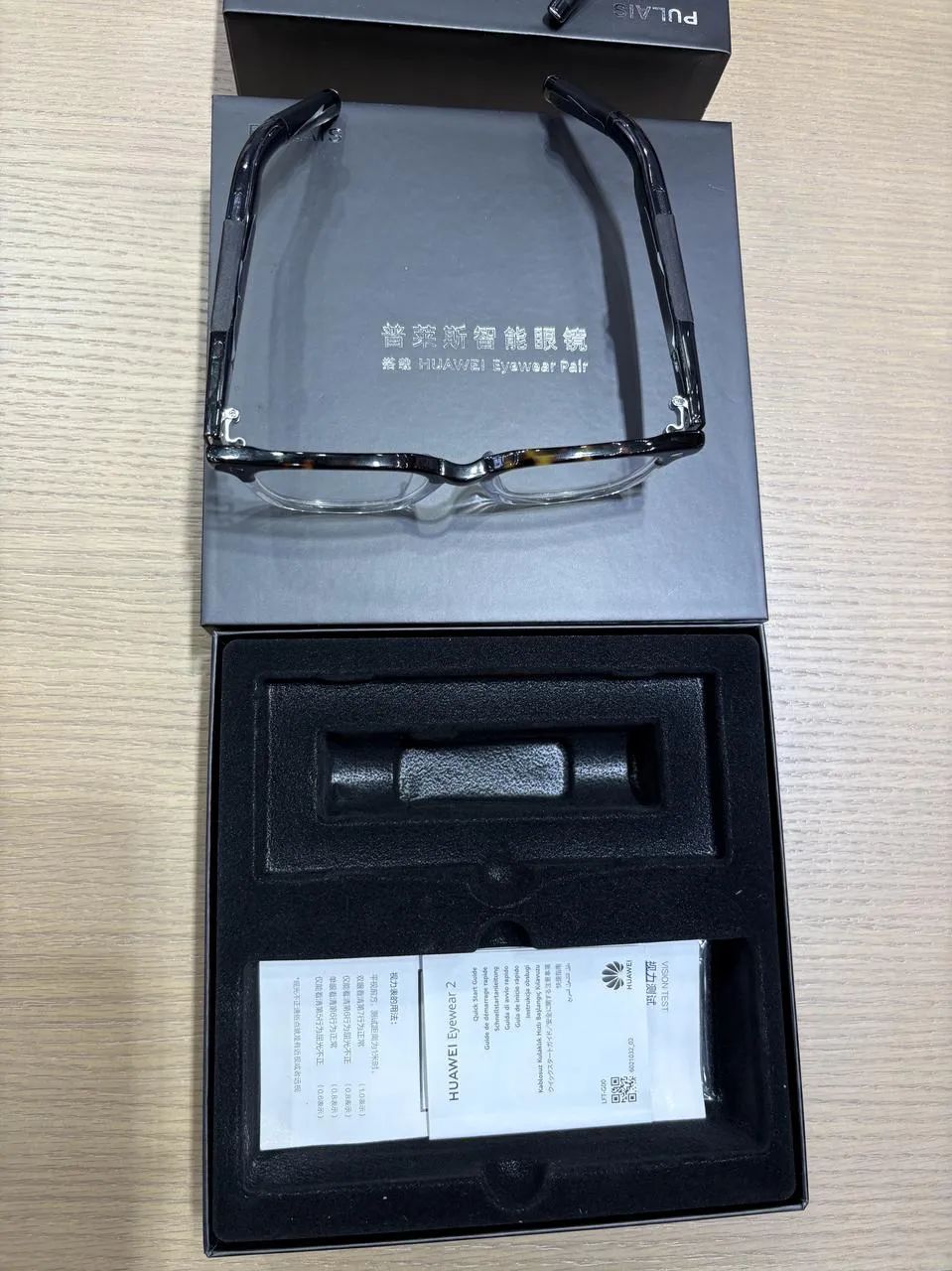
4. Hardware Going Global
The majority of exhibitors at this exhibition were smart glasses hardware manufacturers, including complete machines, components, glasses case accessories, lenses, etc. In contrast, software service providers were very scarce.
Sichuang Technology, a provider of going global/cloud service solutions, was present at the exhibition. Staff on-site said that they can provide services such as access to the Gemini AI large model for some hardware manufacturers with going global needs.
He said that some manufacturers want to go global but lack good channels and may come to inquire. 'I encountered nearly 10 inquiring customers today. In the morning, there was a customer from Taiwan who wanted to produce a sports smart glasses model. He didn't have the hardware or much technical knowledge, so he came to seek solutions.'
5. AI Smart Glasses Zone
The exhibition specifically set up an AI Smart Glasses Zone, which included over a dozen small booths and displayed new products like Halliday, Solos, BleeqUp, and Yemu Technology smart glasses. I experienced Yemu Technology's smart glasses on-site. The speakers extend from the temples, giving it a rather unique appearance. Staff revealed that the product is not yet the final version, and the sound quality will be further improved in the later stages.
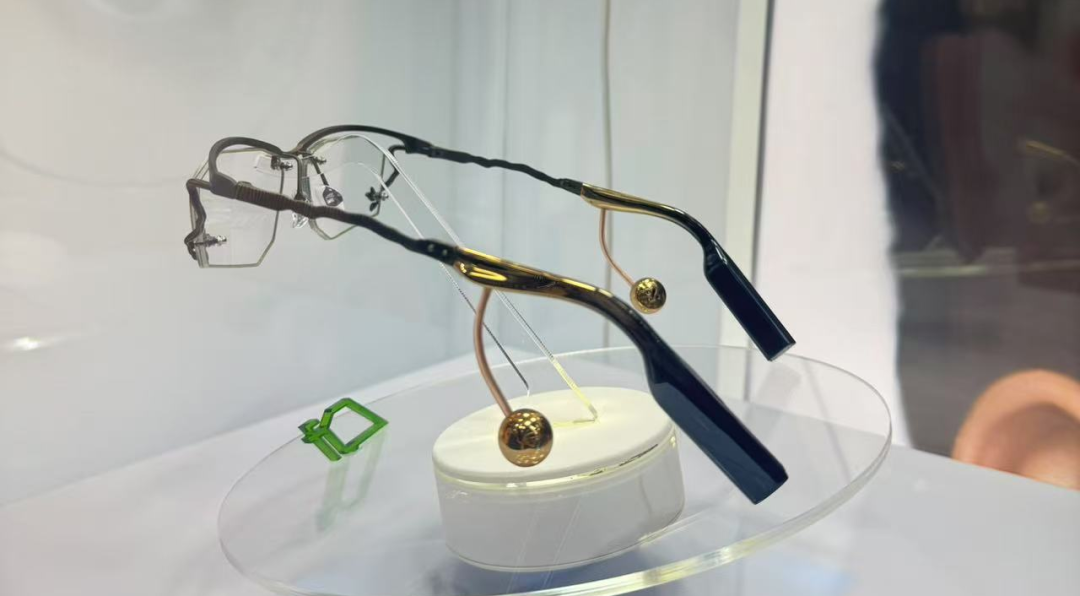
6. Optical Glasses
Beyond the aforementioned smart glasses and AI-powered eyewear, certain exhibition zones highlighted products emphasizing optometric health experiences. For instance, Libai showcased the [Xing Tongxue] myopia management smart glasses. These glasses primarily serve to monitor children's eye usage habits, encompassing factors like the duration of glasses wear and whether they engage in downward gaze while using their eyes. The backend APP aggregates data and offers reminders to correct poor habits. The retail price for these glasses stands at 1980 yuan.
Lipson exhibited electrochromic glasses at the venue. The basic model boasts a singular function: adjusting lens transparency based on different scenarios to cater to diverse needs. Fully charged, these glasses can last a week of active use and have a standby time of approximately 20 days. The wholesale price for the basic model falls within the range of 600 to 800 yuan. Additionally, their booth featured more high-end offerings integrated with audio functionality.

Postscript:
Merely observing this exhibition, it is evident that the trend of intelligent glasses is on the horizon.
Regrettably, there is a notable absence of leading domestic smart brands, and low-cost glasses have already saturated the market, leaving an impression of severe homogeneity. Nonetheless, amidst this scenario, an influx of brand manufacturers is anticipated in the second half of the year, and the Huaqiang North market is poised for expansion, potentially heralding a transformed market landscape.

